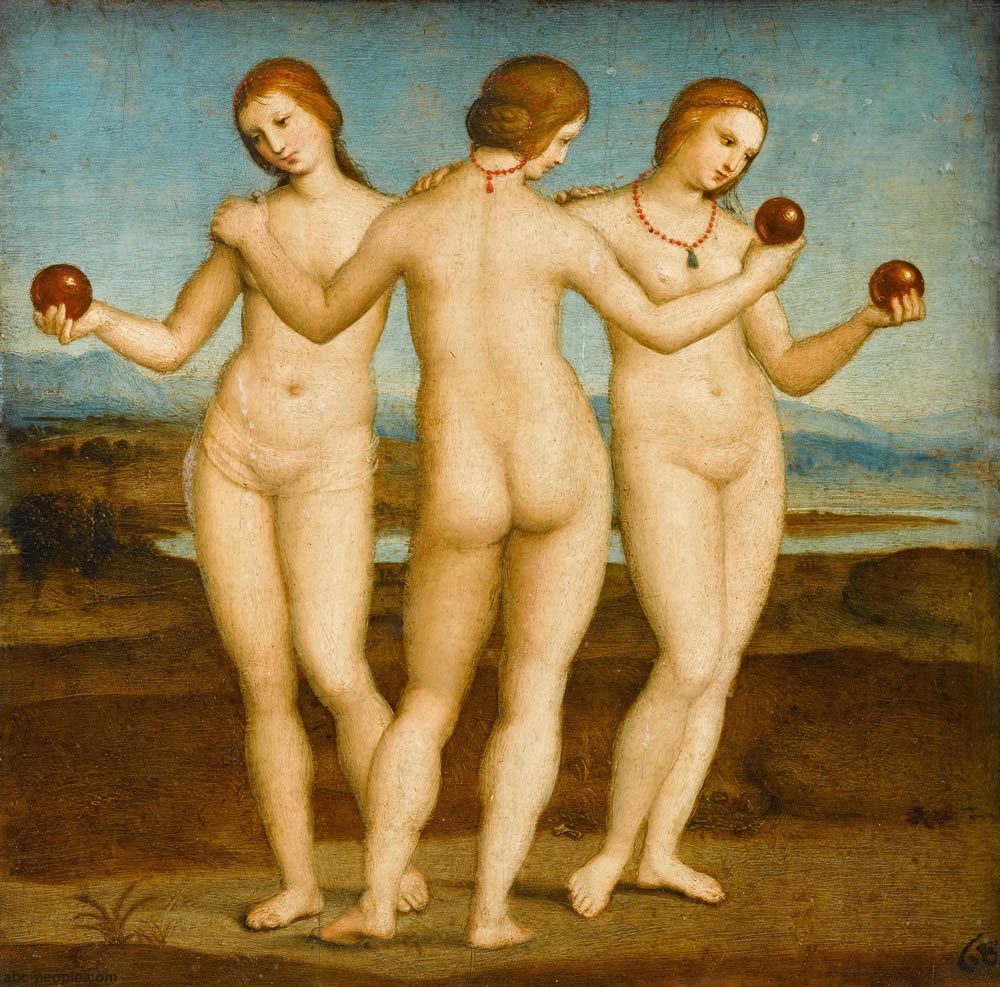| |
Grace,
in Roman mythology (in Greek - the Haritas) beneficent goddess personifying
joyful, kind and eternally young start in life, the daughter of
Jupiter, nymphs and goddesses. Names of Graces (Harit), their origin
and the number of different myths are different. In ancient times,
goddesses depicted in flowing tunics in soft folds, and later -
naked to nothing hid their charms.
According
to Ancient Greek mythology they were the daughters of Zeus and the
Oceanid called Eurynome. The three sisters were attendants of the
goddess Aphrodite were part of her retinue. This article provides
facts and information about the Three Graces.
Who were the Three Graces of Ancient Greek mythology? The meaning
and definition of Three Graces are as follows: Definition of Three
Graces: The Three Graces were minor goddesses and nymphs and according
to Greek Mythology were the daughters of Zeus, the king of the gods
and the Oceanid called Eurynome a nymph of the water-ways and clouds,
who was represented by a statue of what we would call a mermaid.
Other sources say that Helios and the naiad Aegle were the parents
of the Charities. The Three Graces were reputed to be the essence
of beauty, charm, and grace and were closely associated with the
Nine Muses who presided and inspired song, dance, music, poetry
and the sciences. They were regarded as the inspirers of the qualities
which give attractiveness to wisdom, love, culture and social interaction.
The names of the Three Graces were Aglaia, Thalia, and Euphrosyne. |
|

